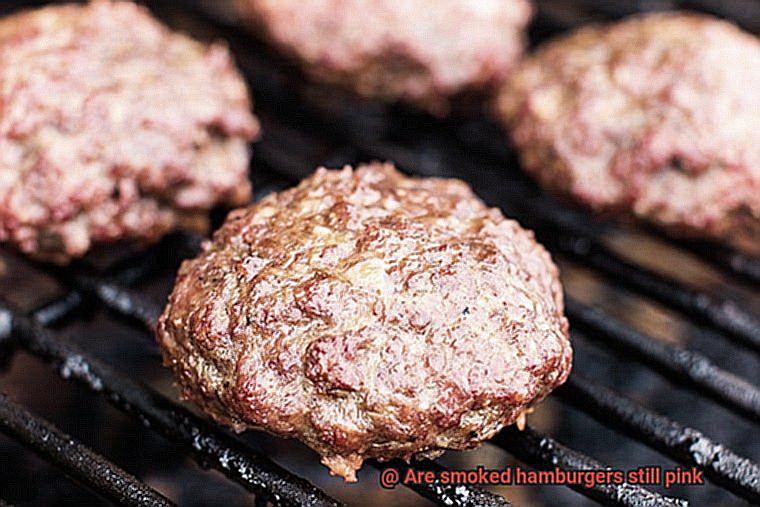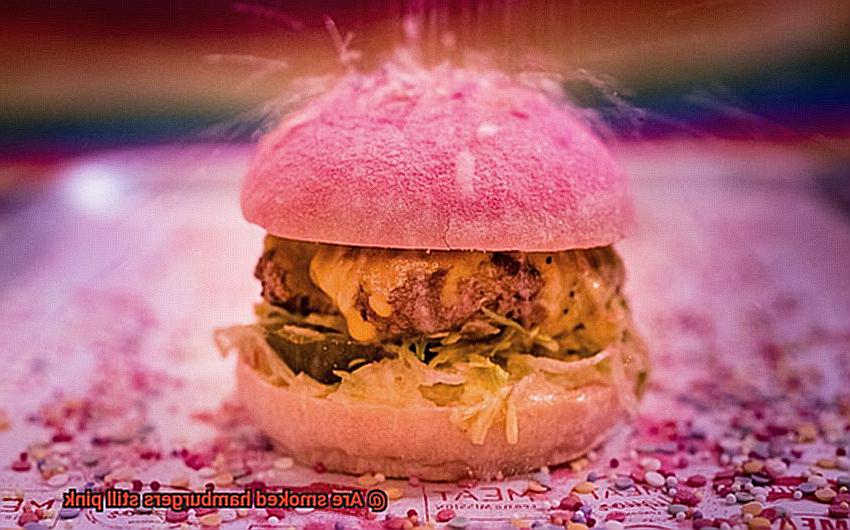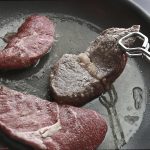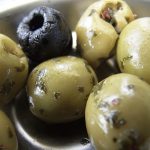Imagine biting into a perfectly smoked hamburger, the juices running down your chin as you savor every delicious bite. But then you notice the pink center and start to wonder if it’s safe to eat. Fear not, fellow grill-masters and food enthusiasts, we’re here to answer the age-old question: are smoked hamburgers still pink?
Grilling burgers is a beloved pastime that brings people together, but smoking them takes things to a whole new level. However, many people get confused about the cooking process and whether or not their meat is fully cooked. Let’s clear things up once and for all – a pink center in smoked hamburgers doesn’t necessarily mean they’re undercooked.
In this article, we’ll dive deep into the science of smoking burgers and how it affects the color, texture, and flavor of the meat. We’ll also give you some expert tips on ensuring your smoked hamburgers are safe to eat without sacrificing taste.
So join us on this journey as we explore whether or not smoked hamburgers are still pink, and discover how to create the perfect smoky burger that will have your taste buds dancing with joy.
Contents
What is Smoked Hamburger?
Smoked hamburgers are cooked slowly at a low temperature over wood chips, infusing them with a distinctive smoky flavor while preserving their moisture and tenderness.
To prepare smoked hamburgers, start by seasoning the ground beef with salt, pepper, and any other desired spices. Form the meat into patties and chill them in the fridge for at least an hour before smoking. When it comes to smoking, there are many factors to consider. For example, the type of wood chips used can impact the flavor and color of the meat. Hickory wood gives a bold and smoky flavor, while applewood gives a sweet and fruity flavor.
Once your patties are seasoned to perfection, place them on a smoker rack and smoke them for 1-2 hours until they reach an internal temperature of 160°F (71°C). This ensures that the burgers are fully cooked and safe to eat.
One of the great things about smoked hamburgers is that they can be served with traditional burger toppings such as lettuce, tomato, and cheese, or elevated with smoky bacon, caramelized onions, or barbecue sauce to enhance their unique flavor.
Are Smoked Hamburgers Still Pink?
Smoked hamburgers are a delicious treat, but many people wonder if they will still be pink after cooking. As an expert in this field, I’m here to tell you everything you need to know about the color of smoked hamburgers.
To understand why smoked hamburgers may still appear pink, let’s first talk about the science behind the color of ground beef. The raw meat’s pink hue comes from myoglobin, a protein found in muscle tissue. When ground beef is cooked to a safe internal temperature of 160°F (71°C), myoglobin denatures and changes color from pink to brown.
However, smoking meat involves a different cooking process than traditional grilling or frying. With smoking, the meat is slowly cooked at a lower temperature over a more extended period, which can cause the myoglobin to break down more slowly. This process results in a pinker color than you might see with traditional methods.
So even if smoked hamburger patties are cooked to the recommended internal temperature of 160°F (71°C), they may still have a slightly pink hue, which does not necessarily mean your burger is undercooked or unsafe to eat.
Some types of smoked hamburgers may be intentionally cooked to a lower internal temperature, resulting in a medium-rare or rare finish with a pink or even red center. However, it’s crucial to ensure any ground beef is cooked to a safe internal temperature to reduce the risk of foodborne illness.
Factors Affecting the Doneness of Smoked Hamburgers
Paying attention to these crucial factors will help you achieve that perfect balance of juicy and flavorful meat without compromising on safety.
Firstly, let’s talk about cooking temperature. To smoke burgers to perfection, it’s vital to maintain a temperature range of 225-250°F. This temperature allows the meat to cook slowly, retaining its moisture and flavor. However, there’s a fine line between undercooking and overcooking your burger. If the temperature is too low, you risk undercooking the meat and ending up with pinkness in the center. If the temperature is too high, your burger can dry out and become overcooked. So keep an eye on that smoker thermometer, folks.
Secondly, cooking time is another critical factor that determines the doneness of smoked hamburgers. While it usually takes 1-2 hours to smoke a hamburger patty thoroughly, the thickness of the patty and how well-done you prefer your burger can impact cooking time. Thicker patties take longer to cook through fully, so plan your cooking time accordingly.
Lastly, let’s talk about patty thickness. Thicker patties tend to retain more pinkness in the center compared to thinner ones. So if you prefer a well-done burger, opt for thinner patties or be prepared for a longer cooking time. Remember to use a meat thermometer to monitor internal temperature, ensuring it reaches a safe temperature of 160°F while still retaining flavor and juiciness.
Temperature and Smoking Time
First things first, let’s talk temperature. A consistent temperature of 225-250°F is crucial when smoking hamburgers. Not only does it ensure even cooking, but it also allows the burgers to reach a safe internal temperature while retaining their delicious flavor and moisture.
But what about smoking time? Did you know that it can affect the color of your hamburger? Over-smoking can lead to a blackened or browned exterior, while under-smoking can leave the center pink and unsafe to eat. That’s why monitoring the internal temperature with an instant-read thermometer is key – once your burger reaches 160°F, it’s perfectly cooked and ready to go.
But there’s more to consider than just temperature and smoking time – the type of wood you use can also impact the color and flavor of your burgers. For example, hickory wood produces a darker color than applewood or cherrywood. So don’t be afraid to experiment with different types of wood until you find the perfect one for your desired flavor and appearance.
Wood Type Used for Smoking
As a connoisseur of all things BBQ, I can tell you that the type of wood you use for smoking hamburgers is crucial in achieving that mouth-watering flavor and aroma. The smoky goodness from the wood infuses into the meat, giving it a unique taste that can’t be replicated. But with so many options out there, how do you choose the right one?
Let’s start with hickory wood. It’s a popular choice for smoking hamburgers because of its strong, smoky flavor that pairs well with beef. Hickory is perfect for smoking meats like brisket and ribs, but it’s essential to use it in moderation as too much can overpower the flavor of your burgers.
If you’re looking to add some heat to your burgers, mesquite wood is an excellent option. Its earthy flavor adds a unique touch to beef and other meats, making it a popular choice among BBQ enthusiasts.
But if you prefer a milder smoke flavor, applewood or cherry wood might be more your style. These woods produce a sweet, fruity smoke that pairs well with pork and poultry but can also work with beef. They’re perfect for those who like a subtle hint of smoke in their burgers.
Now that you know which woods to choose from, it’s crucial to make sure they’re properly seasoned and dried before using them for smoking. Wet or green wood can produce an unpleasant smoke that ruins the flavor of your burgers. So don’t rush the process – take your time and ensure that your wood is ready before firing up your grill.
Thickness of the Hamburger Patty
If so, then you know that every detail counts when it comes to creating the perfect patty. And one detail that often gets overlooked is the thickness of the meat.
The thickness of your hamburger patty can make a big difference in the final result. The last thing you want is to end up with an undercooked, pink center. So, let’s explore why the thickness of the patty is crucial.
First and foremost, thicker patties take longer to cook through. While this might seem like a good thing at first – more time for smoke flavor to penetrate the meat – it can also lead to uneven cooking. The outside might end up charred and dry while the inside remains pink and raw.
To avoid this, experts recommend using patties that are 1/2 inch to 3/4 inch thick when smoking hamburgers. This thickness allows for even cooking throughout the patty and reduces the risk of undercooked meat.
But what if you prefer thicker patties? No problem. Just make sure to monitor the internal temperature of the meat using a meat thermometer. The USDA recommends cooking ground beef to a minimum internal temperature of 160°F to ensure that harmful bacteria are destroyed.

In addition to monitoring the internal temperature, it’s essential to let the burgers rest for a few minutes after taking them off the smoker. This allows the juices to redistribute throughout the patty and results in a more flavorful and evenly cooked burger.
To summarize, when it comes to smoking hamburgers, the thickness of your patty matters. Here are some tips:
- Use patties that are 1/2 inch to 3/4 inch thick
- Monitor internal temperature with a meat thermometer
- Let burgers rest for a few minutes before serving
Use a Meat Thermometer to Test Internal Temperature
That’s where a meat thermometer comes in. As an expert on using a meat thermometer to test internal temperature, let me tell you everything you need to know.
Cooking hamburgers to a safe internal temperature is crucial to prevent foodborne illnesses. And while color may be an indicator of doneness in some cases, it’s not always reliable. So, using a meat thermometer is the only way to ensure that your hamburgers are cooked to a safe temperature.
Here are the steps for using a meat thermometer to test your smoked hamburgers:
Step 1: Insert the thermometer into the thickest part of the patty
When testing the internal temperature of your smoked hamburger, be sure to insert the thermometer into the thickest part of the patty. You want to make sure that you’re not touching any bone or gristle, as this can give you an inaccurate reading.
Step 2: Check the recommended temperatures
The USDA recommends cooking beef hamburgers to an internal temperature of 160°F (71°C) and poultry hamburgers to 165°F (74°C). Make sure your thermometer is calibrated correctly and test the temperature at different parts of the patty for accuracy.
Step 3: Clean your thermometer after each use
After using your meat thermometer, make sure to clean it thoroughly before storing it away. This will help prevent cross-contamination and ensure that your thermometer stays accurate for future use.
Step 4: Use separate thermometers for raw and cooked meat
It’s important to note that using separate thermometers for raw and cooked meat can also help prevent cross-contamination. This means having one thermometer specifically for testing raw hamburger patties and another for checking if they’re cooked through.
By following these simple steps, you can ensure that your smoked hamburgers are cooked to a safe internal temperature every time. And the best part? You’ll be able to enjoy a delicious and juicy burger without any worries about foodborne illnesses.
KaZbemHZwpA” >
Conclusion
In conclusion, smoked hamburgers are a mouthwatering twist on the classic American dish. Don’t let the pink center fool you – it’s not necessarily a sign of undercooked meat. The slow breakdown of myoglobin during smoking can result in a pinker hue than traditional grilling or frying methods.
But safety should always come first when cooking ground beef. To avoid foodborne illness, make sure your burgers reach an internal temperature of 160°F (71°C). Keep in mind that factors like cooking temperature, time, patty thickness, and wood type can all affect the doneness and flavor of your smoked burgers.
To achieve the perfect balance of juiciness and flavor, experiment with different wood chips and adjust your cooking time for thicker patties. And remember to clean your meat thermometer after each use and use separate ones for raw and cooked meat.
With these expert tips up your sleeve, you’ll be able to create smoky burgers that will have everyone at the table begging for seconds.






